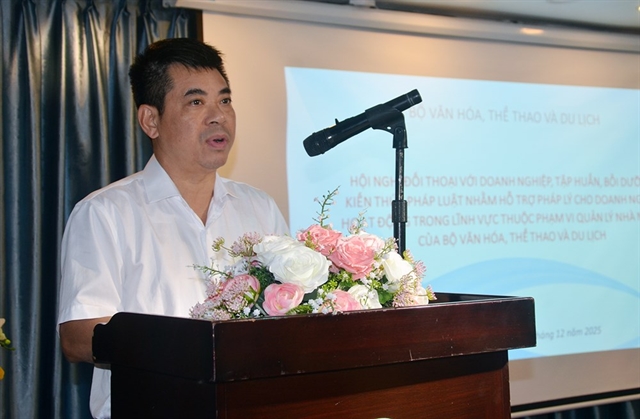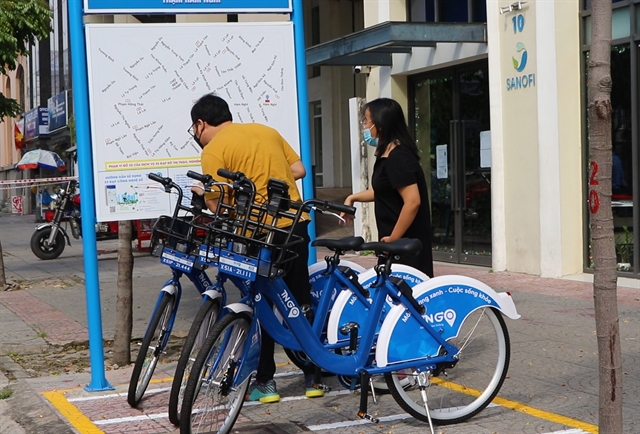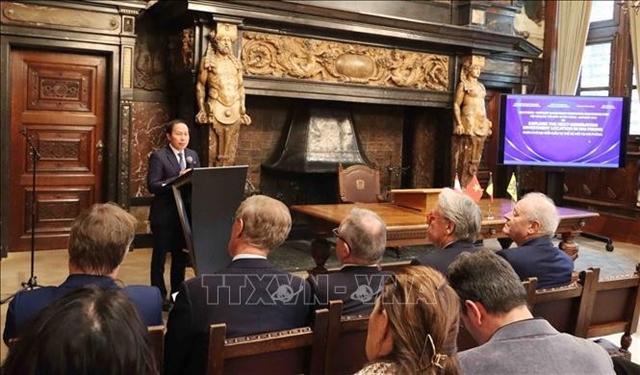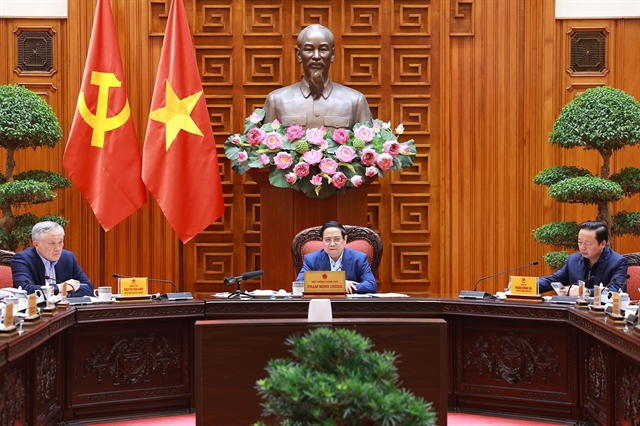 Society
Society

 |
| Nearly four years after being launched, many bike stations in District 1 now stand idle, with only a few young people hiring bikes at weekends. — VNS Photo Xuân Đăng |
HCM CITY — Nearly four years after being launched, HCM City’s public bicycle rental service has seen a sharp decline in users, prompting the investor to plan the introduction of e-bikes to make the service more diverse and convenient.
When first introduced in late 2021, the public bicycle system quickly attracted residents thanks to its convenience and affordability, with rental prices set at VNĐ5,000 (US$0.19) for 30 minutes and VNĐ10,000 per hour.
The project’s early success inspired other cities such as Vũng Tàu, Quy Nhơn, Hà Nội, Hải Phòng and Đà Nẵng to adopt similar schemes. However, after an initial period of popularity, the number of users in HCM City has fallen, particularly on weekdays.
Many stations in District 1 now stand idle, with only a few young people hiring bikes at weekends. Locals say they are less interested in the service due to hot weather and the lack of dedicated cycling infrastructure.
“It’s too hot and traffic is too messy for daily cycling,” said 28-year-old Ngọc Hạnh, who used to rent bikes to commute or exercise. “I still enjoy it sometimes at weekends, but it’s not practical for everyday travel.”
Hoàng Minh, 30, told the Việt Nam News that he found it quite inconvenient that the bicycle stations were not located near the places he wanted to go but were mostly concentrated in the city centre, so he rarely used the service.
Currently, the system’s stations are concentrated mainly in central areas and near bus stops, metro stations, parks and schools. While renting is easy, returning a bike can be inconvenient if the destination is far from a station.
The city’s hot climate and lack of bike lanes also make cycling less safe and less competitive compared to motorbikes or ride-hailing services.
At several stations on Lê Lợi, Lê Thánh Tôn, Nguyễn Thị Minh Khai and Đinh Tiên Hoàng streets, the number of users has visibly declined, with dozens of neatly parked bikes left unused.
The public bike system, operated by Trí Nam Group, began with 43 stations and nearly 400 bicycles, later expanding to 52 stations with more than 500 bikes. Each bicycle is equipped with a smart lock and GPS and can be rented through a mobile app.
Statistics from the operator show that ridership has steadily dropped: from nearly 320,000 trips in 2022 to 164,000 in 2023, and only about 80,400 in 2024 – a 75 per cent decrease from the first year. In the first six months of 2025, only around 37,000 trips were recorded.
Đỗ Bá Dân, chairman of Trí Nam Group, said the decline was expected, as the service has entered a stable phase after attracting users to experience it in the initial period. “Our current regular users mainly take short trips or use the bikes in combination with buses or the metro. This is a sustainable group with consistent habits,” he said.
He added that tourists and young people remain steady users at weekends when they combine cycling with sightseeing or exercise.
According to Dân, this transition from trial users to those with genuine transport needs reflects the service’s proper role – supporting short-distance travel, linking to public transport and encouraging eco-friendly mobility.
To enhance convenience, the company plans to introduce 500 e-bikes in both HCM City and Hà Nội within the next one or two months. The e-bikes will operate alongside traditional bicycles, targeting users who need to travel longer distances or faster. The operator will review the results before expanding the model further.
“With its role in short-distance travel and connection to public transport, the bicycle remains a long-term solution to diversify urban mobility,” Dân said.
Meanwhile, HCM City is preparing to pilot a dedicated bicycle lane on Mai Chí Thọ Boulevard in Thủ Đức City, stretching nearly six kilometres and two metres wide along both sides of the road. The project is expected to lay the groundwork for a wider cycling network to encourage residents to use bicycles and connect with the city’s public transport system.
Lê Trung Tính, chairman of the HCM City Passenger Transport Association, said the plan to develop dedicated bike lanes is essential. “One reason the public bicycle system has not grown as expected is the lack of safe and consistent cycling infrastructure,” he noted.
He emphasised that bicycles not only serve residents and tourists for short trips but also help promote public transport use, especially as the Bến Thành–Suối Tiên metro line is now operational and more lines are being planned.
Citing examples from cities such as Bogotá in Colombia and Guangzhou in China, Tính said that to develop public cycling, authorities should ensure comprehensive planning, wide station coverage and clear, safe bike lanes. “People will cycle more if they have safe routes and conveniently located stations,” he said.
He also recalled that downtown HCM City once had designated bicycle paths on streets such as Pasteur, Trần Hưng Đạo and Nguyễn Văn Cừ. Although some dividers remain, the lanes have lost their original function over time.
Tính suggested that if the city revives and modernises these routes, bicycles could once again become a common mode of urban transport, helping to ease congestion and reduce pollution. — VNS




